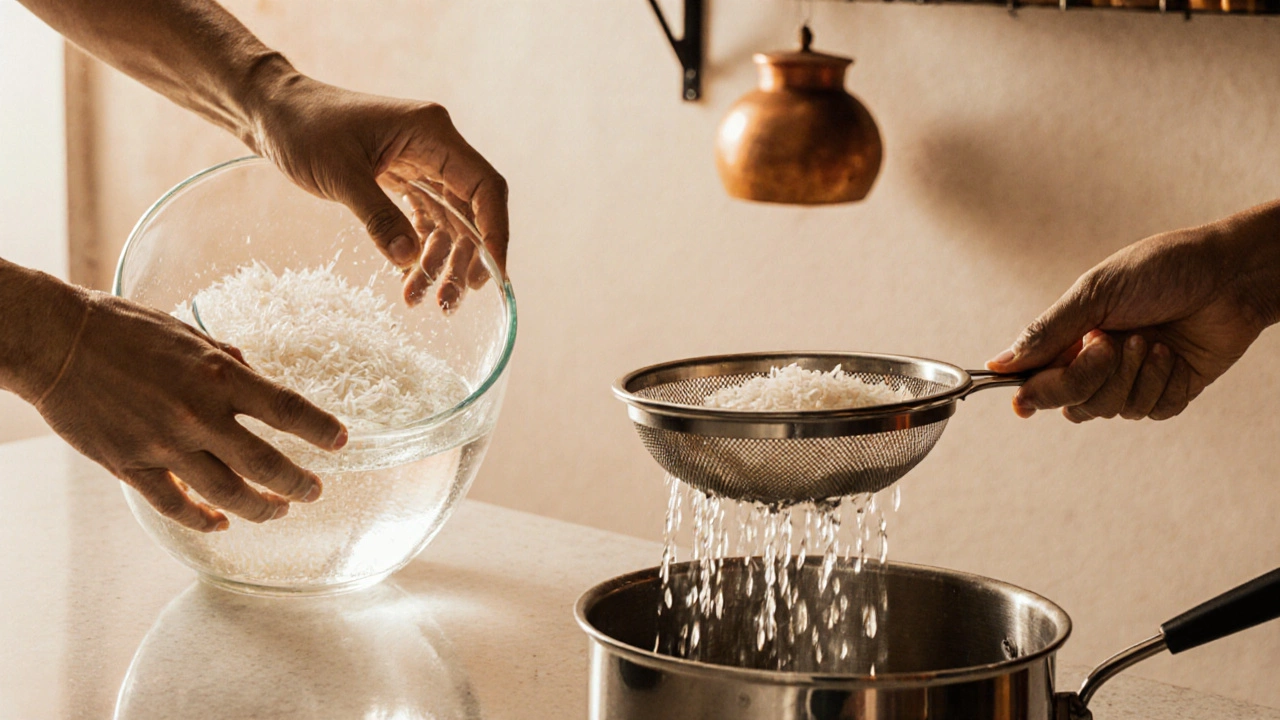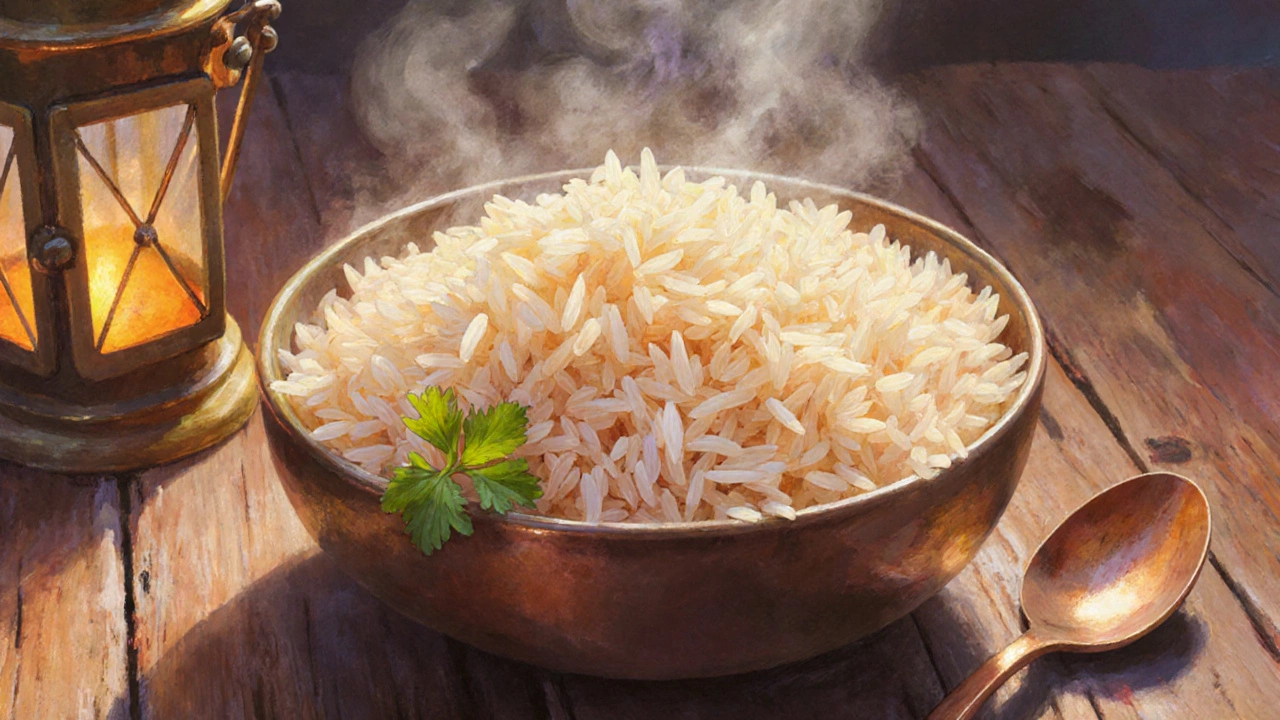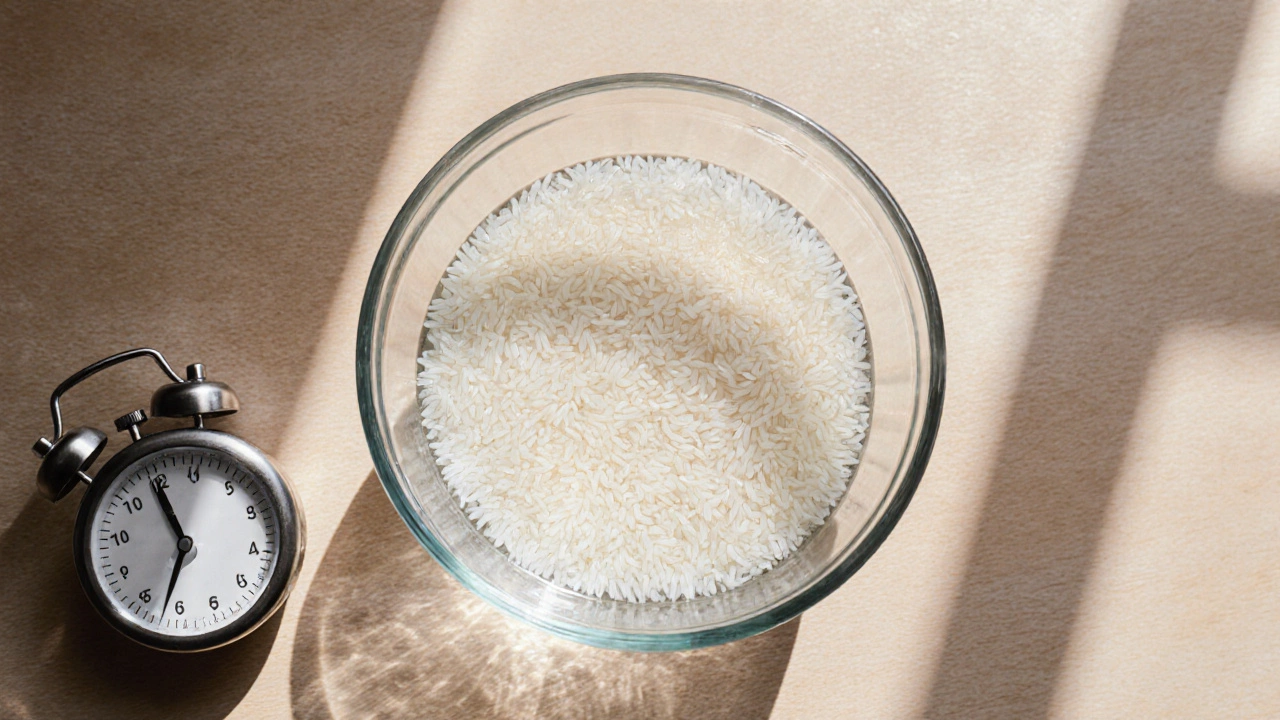Basmati Rice Soaking Time Calculator
Adjust your soaking time
Recommended soaking time
-- minutes
Tip
--
Quick Takeaways
- For fluffy, separate grains, soak basmati rice 20‑30 minutes.
- Older grains or high‑altitude kitchens benefit from a 45‑60 minute soak.
- Rinse twice, use a 1.5:1 water‑to‑rice ratio, and let the rice rest 5 minutes after cooking.
Ever wondered why a cup of basmati sometimes turns mushy while other times it’s perfect? The secret often lies in the pre‑cooking soak. In this guide we’ll break down exactly how long you should soak basmati rice, why that timing matters, and how to tweak it for any kitchen.
Why Soak Basmati Rice?
Basmati rice is a long‑grain variety native to the Indian subcontinent, prized for its fragrant aroma and needle‑thin grains. Soaking does three things:
- Hydrates the grain: The outer bran layer absorbs water, reducing the time needed on the stove.
- Relaxes the starch: When starch granules swell gradually, they’re less likely to gelatinize into a sticky paste.
- Enhances aroma: Soaked rice releases more 2‑acetyl‑1‑pyrroline, the compound that gives basmati its signature scent.
Skipping the soak? You’ll likely need a longer cooking time and still end up with clumped grains.
Ideal Soaking Duration
The “golden window” for most home cooks sits between 20 and 30 minutes. Here’s how that range breaks down:
- 20 minutes: Freshly milled rice that’s stored in a cool, dry place. Quick enough for weekday meals.
- 30 minutes: Slightly older rice (up to 6 months) or when you want extra fluffiness.
- 45‑60 minutes: Rice that’s been in the pantry for a year or more, or cooking at altitude (>1,500m). The extra time compensates for harder grains.
If you soak longer than an hour, the grains can become overly soft and may split during cooking, leading to a mushier texture.

Step‑By‑Step Soaking Method
- Measure the rice: One cup of dry basmati yields about three cups cooked.
- Rinse twice: Place the rice in a bowl, fill with cold water, swirl, and pour off. Repeat. This removes excess surface starch.
- Choose your container: A glass bowl or stainless‑steel pot works best. Avoid reactive metals like copper.
- Add water: Fill the bowl with enough cool water to completely submerge the grains-about twice the volume of rice.
- Set a timer: Aim for 20‑30 minutes unless you fall into one of the special cases mentioned above.
- Drain: After the timer goes off, pour the rice through a fine‑mesh sieve and let it sit for a minute to drip dry.
- Cook immediately: Transfer to your pot or rice cooker, add fresh water (1.5cups for every cup of soaked rice), and start cooking.
Tip: If you’re prepping ahead, you can soak the rice, drain, and store the grains in the fridge for up to 24hours. Just bring them to room temperature before cooking.
Adjusting Soak Time for Different Situations
Soaking the process of immersing rice in water before cooking isn’t one‑size‑fits‑all. Consider these variables:
- Age of rice: Older rice loses moisture, so extend the soak by 15‑20 minutes.
- Altitude: Higher elevations have lower boiling points; a longer soak helps achieve the same grain softness.
- Equipment: Rice cookers often have a “soak” setting-use it if you’re aiming for ultra‑fluffy results.
- Hard water: Minerals can hinder absorption. If your tap water is very hard, add a pinch of baking soda to the soak water.
Common Mistakes and Quick Fixes
Even seasoned cooks slip up. Here’s a cheat‑sheet of pitfalls and how to rescue your dish.
| Problem | Why It Happens | Fix |
|---|---|---|
| Rice turns gummy | Insufficient rinse or over‑soak | Rinse thoroughly, keep soak under 45min, use exact water ratio. |
| Grains stay hard after cooking | Too short a soak, especially with old rice | Extend soak by 15‑20min, add a splash more water during cooking. |
| Loss of fragrance | Cold water soak or using too much water | Use cool (not ice‑cold) water and keep soak volume just enough to cover. |

Quick Reference Guide
- Fresh rice (≤6months): 20‑30min soak
- Older rice (6‑12months): 30‑45min soak
- Very old or high‑altitude: 45‑60min soak
- Water‑to‑rice ratio after soaking: 1.5:1 (by volume)
- Rest time after cooking: 5‑10min, covered
Mini‑FAQ
Can I soak basmati rice overnight?
Yes, but drain and rinse before storing. Overnight soaking can make the grains a bit too soft, so you may want to reduce the cooking water slightly.
Do I need to soak brown basmati?
Brown basmati has the bran layer intact, so a longer soak (45‑60min) and more water are recommended.
What’s the best water temperature for soaking?
Room‑temperature water (around 20‑22°C) works best. Warm water speeds up absorption but can start the cooking process early, affecting texture.
Should I add salt to the soak water?
Add a pinch of salt (about 1g per cup of rice) if you like a lightly seasoned grain. It helps the grains stay separate.
Can I use a rice cooker’s “quick cook” setting after soaking?
Yes. Soaked basmati requires less cooking time, so the quick‑cook function will give you perfectly tender rice in about 10‑12 minutes.
Next Steps
Pick a batch of basmati, give it a 20‑minute soak, and try the method above tonight. If the grains are still a little firm, add another 10 minutes next time. The more you experiment, the better you’ll understand how your local water and altitude affect the perfect soak.
Happy cooking!
